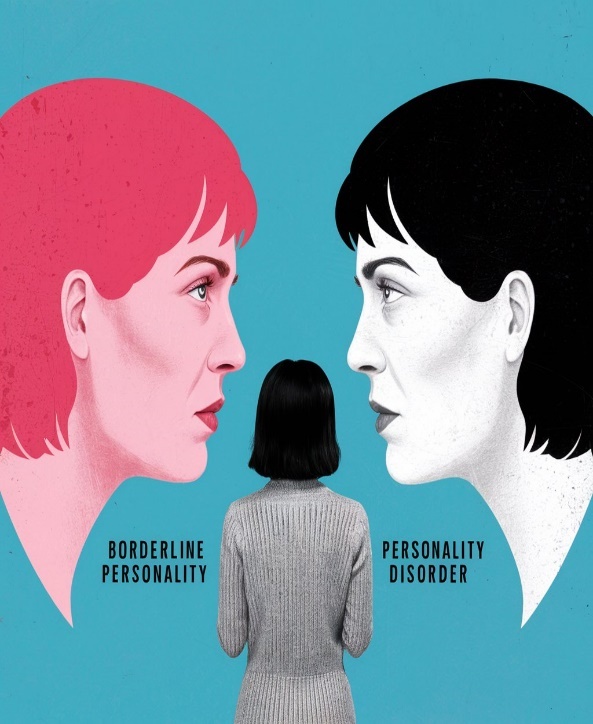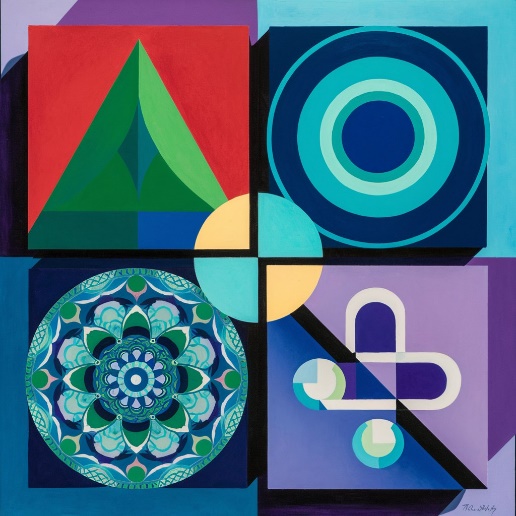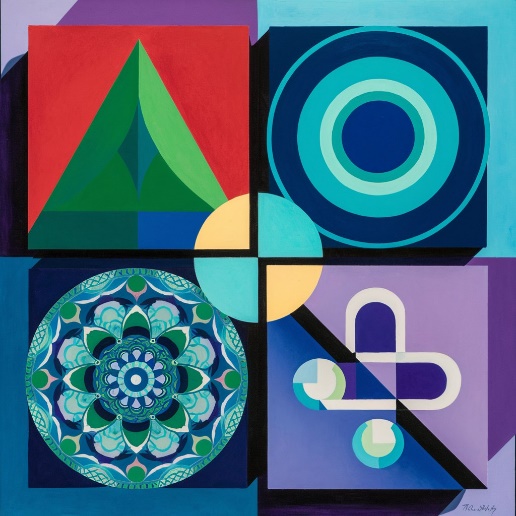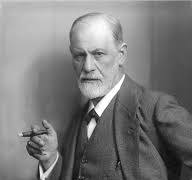By Prof. Levine & Dr. Salganik
Hello to our readers
Borderline Personality Disorder (BPD) is a mental condition characterized by a common pattern of instability in mood, behavior, self-image, and functioning. These patterns often result in impulsive actions and unstable relationships. People with BPD may experience intense episodes of anger, depression, and anxiety that can last from a few hours to a few days.
Main features of BPD:
Emotional instability: People with BPD often experience rapid and intense mood swings. Their emotions can be extreme and change rapidly in response to stress or perceived threats to their self-image.
Distorted self-image: People with BPD may have an unstable or distorted sense of self, leading to frequent changes in goals, values, and aspirations. They may feel worthless, empty or misunderstood.
Fear of abandonment: A significant characteristic of BPD is an intense fear of abandonment or rejection. This fear can lead to frantic efforts to avoid being alone or maintain relationships, even if it means tolerating unhealthy situations.
Unstable Relationships: Relationships with others can be intense and chaotic. People with BPD may adore someone one moment and devalue them the next, reflecting their difficulty maintaining stable relationships.
Impulsive behavior: BPD can lead to risky behaviors, such as drug use, reckless driving, overeating, or self-harm. These actions are often attempts to deal with emotional pain or stress.
Chronic feelings of emptiness: Many people with BPD report feeling empty or hollow inside, which leads to a constant search for something or someone to fill this perceived emptiness.
Inappropriate anger: Intense anger or difficulty controlling anger is common in borderline personality disorder. This can manifest in verbal outbursts, physical fights or deep resentment towards others.
Paranoid thoughts and dissociation: In times of extreme stress, people with BPD may experience transient, stress-related paranoid thoughts or dissociative symptoms (a sense of detachment from themselves or reality).


The perception of the representation of the self and the other as good or bad in borderline personality disorder: an illustration with the help of AI
Read more »
By Prof. Levine & Dr. Salganik
שלום לקוראנו
הפרעת אישיות גבולית (BPD) היא מצב נפשי המאופיין בדפוס נפוץ של חוסר יציבות במצבי רוח, בהתנהגות, בדימוי עצמי ובתפקוד. דפוסים אלה גורמים לעיתים קרובות לפעולות אימפולסיביות ולמערכות יחסים לא יציבות. אנשים עם BPD עשויים לחוות פרקים אינטנסיביים של כעס, דיכאון, וחרדה שיכולים להימשך בין כמה שעות לכמה ימים.
תכונות עיקריות של BPD:
חוסר יציבות רגשית: אנשים עם BPD חווים לעתים קרובות תנודות מהירות ואינטנסיביות במצב הרוח. הרגשות שלהם יכולים להיות קיצוניים ולהשתנות במהירות בתגובה ללחץ או איומים נתפסים על הדימוי העצמי שלהם.
דימוי עצמי מעוות: אנשים עם BPD עשויים להיות בעלי תחושת עצמי לא יציבה או מעוותת, מה שמוביל לשינויים תכופים במטרות, ערכים ושאיפות. הם עשויים להרגיש חסרי ערך, ריקים או לא מובנים.
פחד נטישה: מאפיין משמעותי של BPD הוא פחד עז מנטישה או דחייה. פחד זה יכול להוביל למאמצים קדחתניים להימנע מלהישאר לבד או לשמור על מערכות יחסים, גם אם זה אומר לסבול מצבים לא בריאים.
מערכות יחסים לא יציבות: מערכות יחסים עם אחרים יכולות להיות אינטנסיביות וכאוטיות. אנשים עם BPD עשויים להעריץ מישהו רגע אחד ולהפחית מערכו ברגע הבא, דבר המשקף את הקושי שלהם לשמור על מערכות יחסים יציבות.
התנהגות אימפולסיבית: BPD יכול להוביל להתנהגויות מסוכנות, כגון שימוש בסמים, נהיגה פזיזה, אכילה מוגזמת או פגיעה עצמית. פעולות אלה הן לעתים קרובות ניסיונות להתמודד עם כאב רגשי או מתח.
תחושות כרוניות של ריקנות: אנשים רבים עם BPD מדווחים על תחושת ריקנות או ריקנות מבפנים, מה שמוביל לחיפוש מתמיד אחר משהו או מישהו שימלא את הריקנות הנתפסת הזו.
כעס בלתי הולם: כעס עז או קושי לשלוט בכעס נפוץ בהפרעת אישיות גבולית. זה יכול להתבטא בהתפרצויות מילוליות, מריבות פיזיות או טינה עמוקה כלפי אחרים.
מחשבות פרנואידיות ודיסוציאציה: בזמנים של לחץ קיצוני, אנשים עם BPD עשויים לחוות מחשבות פרנואידיות חולפות, הקשורות ללחץ או סימפטומים דיסוציאטיביים (תחושת ניתוק מעצמם או מהמציאות).


תפיסת ייצוג האני ואף הזולת כטוב או כרע בהפרעת אישיות גבולית: איור בעזרת AI
Read more »
By Prof. Levine & Dr. Salganik
Greetings to our readers,
This time we will mainly discuss the possibility of combining RGFT treatment with other psychotherapeutic treatments.
We will first note that so far most of the literature articles discussing combinations of treatments in the context of psychiatric and psychological conditions refer mainly to combining a given psychotherapeutic approach with drug treatment, but as mentioned above this is not our main intention here.
In order to jump into the water, we will first start with the article by Christina Zarbo and her collegues discussing the combination of different psychotherapeutic methods.

Christina Zarbo
Department of Human and Social Sciences, University of Bergamo, Bergamo, Italy
Zarbo C, Tasca GA, Cattafi F and Compare A (2016) Integrative Psychotherapy Works.Front. Psychol.6:2021.
The article by these four authors discusses the effectiveness of integrative psychotherapy, which is actually psychotherapy that combines treatments or elements from psychotherapeutic treatments and sometimes also pharmacotherapy or drug therapy. The article emphasizes the recognition of integrative psychotherapy as a valuable treatment in various psychiatric conditions while emphasizing the complexity of choosing the right psychotherapeutic approach due to the huge number of over 400 different psychotherapeutic methods are available, each defined by different theoretical models and different formats.
The purpose of the authors is to foster a dialogue between these diverse models in order to improve clinical practice.

AI-assisted illustration: the combination of several elements
Read more »
By Prof. Levine & Dr. Salganik
שלום רב לקוראנו
הפעם נדון בעיקר באפשריות לשלב טיפול ב RGFT עם טיפולים פסיכותרפויטיים אחרים.
נעיר תחילה כי עד כה רוב מאמרי הספרות הדנים בשילובים של טיפולים בהקשר למצבים פסיכיאטריים ופסיכולוגיים מתייחסים בעיקר לשילוב גישה פסיכותרפאוטית נתונה עם טיפול תרופתי, אך כאמור למעלה זו אינה עיקר כוונתנו כאן.
על מנת לקפוץ למים, נפתח תחילה במאמרם של כריסטינה ז'רבו וחבריה הדנים בשילובן של שיטות פסיכותרפאוטיות שונות.

כריסטינה ז'רבו
המחלקה למדעי האדם והחברה, אוניברסיטת ברגמו, ברגמו, איטליה
Zarbo C, Tasca GA, Cattafi F and Compare A (2016) Integrative Psychotherapy Works. Front. Psychol. 6:2021.
מאמר ארבעת מחברים אלו דן ביעילותה של פסיכותרפיה אינטגרטיבית שזו בעצם פסיכותרפיה המשלבת טיפולים או אלמנטים מטיפולים פסיכותרפויטיים ואף לעיתים גם פרמקותרפיה או טיפול תרופתי., המאמר מדגיש את ההכרה בפסיכותרפיה אינטגרטיבית כטיפול בעל ערך במצבים פסיכיאטריים שונים תוך הדגשת המורכבות של בחירת הגישה הפסיכותרפית הנכונה בשל המספר העצום של מעל 400 ויותר שיטות פסיכותרפויטיות שונות זמינות, כאשר כל אחת מוגדרת על ידי מודלים תיאורטיים שונים ופורמטים שונים. מטרת המחברים היא לטפח דיאלוג בין מודלים מגוונים אלה בכדי לשפר את הפרקטיקה הקלינית.

איור בעזרת AI : שילובם של מספר אלמנטים
Read more »
By Prof. Levine & Dr. Salganik
Greetings to our readers,
In general, the concept of the unconscious has captured the hearts of researchers and clinicians for over a century, starting with early psychoanalytic theories and ending with modern neuroscience research.
Understanding the unconscious appears to be essential to understanding the full spectrum of human experience, including behaviors, thoughts, and feelings that operate below the conscious level.
In general, the concept of the unconscious includes different types, each of which is defined by different theoretical frameworks.
Below is a suggestion for several types of unconscious processes:
Dynamic subconscious: originated in Freudian psychoanalysis, and includes repressed impulses, desires, memories and conflicts.

Sigmund Shlomo Freud [1856-1939]
Collective Unconscious: Introduced by Carl Jung, this refers to shared and universal archetypes and symbols throughout humanity.

Carl Jung [1875-1961]
Cognitive unconscious: The cognitive psychology perspective, which includes automatic thoughts, implicit memories, and subliminal processing.
Procedural Unconscious: Related to procedural memory, mastery of skills and habits learned without conscious awareness.
Neural Subconscious: The neuroscience view that includes brain activities that occur without conscious awareness, such as those managed by the amygdala and basal ganglia.
Each type emphasizes different aspects and functions of unconscious processes in human cognition and behavior.
Read more »
By Prof. Levine & Dr. Salganik
שלום רב לקוראנו
ככלל, מושג הלא-מודע שבה את ליבם של חוקרים וקלינאים במשך למעלה ממאה שנה, החל מתיאוריות פסיכואנליטיות מוקדמות וכלה במחקר מדעי המוח המודרני. נראה כי הבנת הלא מודע חיונית להבנת הספקטרום המלא של החוויה האנושית, כולל התנהגויות, מחשבות ורגשות הפועלים מתחת לרמת המודעת.
ככלל, מושג הלא מודע כולל סוגים שונים, שכל אחד מהם מוגדר על ידי מסגרות תיאורטיות שונות. להלן הצעה לסוגים מספר של תהליכים לא מודעים:
תת-מודע דינמי: מקורו בפסיכואנליזה הפרוידיאנית, והוא כולל דחפים, רצונות, זיכרונות וקונפליקטים מודחקים.

זיגמונד שלמה פרויד [1856-1939]
תת-מודע קולקטיבי: הוצג על ידי קארל יונג, זה מתייחס לארכיטיפים וסמלים משותפים ואוניברסליים ברחבי האנושות.

קרל יונג [1875-1961]
לא מודע קוגניטיבי: נקודת המבט של הפסיכולוגיה הקוגניטיבית, הכוללת מחשבות אוטומטיות, זיכרונות מרומזים ועיבוד סאבלימינלי.
לא מודע פרוצדורלי: קשור לזיכרון פרוצדורלי, שליטה במיומנויות והרגלים שנלמדו ללא מודעות מודעת.
תת-מודע עצבי: ההשקפה של מדעי המוח, הכוללת פעילויות מוחיות המתרחשות ללא מודעות מודעת, כגון אלה המנוהלות על ידי האמיגדלה וגרעיני הבסיס.
כל סוג מדגיש היבטים ותפקודים שונים של תהליכים לא מודעים בקוגניציה ובהתנהגות האנושית.
Read more »
By Prof. Levine & Dr. Salganik
Greetings to our readers,
Freud is described in the introduction to the book "Dr. Freud Biography" by Paul Ferris "as a man with raging passions, who grew up in a culture that suppresses passions and who strived with all his heart to understand those passions that drive him…. An obsessed genius, sometimes evil, sometimes generous, here and there also mischievous . and Ferris is convinced that, like other pioneering researchers, Freud more than once hitched the cart before the horse….to draw the conclusions that seemed right to him at a given moment."
Is that so?
This time we will discuss in detail the figures that accompanied Freud's life and influenced his personality and the psychoanalytic thought he created and which were internalized in his directory of internalized figures. We will also try to maintain the hierarchy of these images in his inner world.
We will also add that we used various sources including Encyclopedia Britannica, the entry on Freud's life and thought in Wikipedia and Erich Fromm's writings on Freud, among other sources. We will also note that due to the fact that we will show different angles, there will be several repetitions of the same significant figures, each time in a different context.
Brief Biography
Sigmund (Shlomo) Freud was born on May 6, 1856 to Ukrainian Jewish parents, Amalia and Jacob Freud, in Freiburg, Moravia, a small town that was then part of the Austrian Empire. In his early childhood, Freud and his family moved to Leipzig and then to Vienna. Freud was a brilliant student, studied literature, biology and medicine, and graduated with a medical degree from the University of Vienna in 1881.

Sigmund Shlomo Freud [1856-1939]
Freud read widely as a young student, and his later theories were likely influenced by scientists and scholars of his time, as well as prominent continental philosophers, such as Nietzsche and Schopenhauer. Freud was also a devoted reader of Shakespeare, whose literary influence is evident in many of Freud's works.
Read more »
By Prof. Levine & Dr. Salganik
שלום רב לקוראנו,
זיגמונד שלמה פרויד מתואר בהקדמה לספר ד"ר פרויד ביוגרפיה מאת פול פריס " כאדם בעל יצרים גועשים, שגדל בתרבות מדכאת יצרים ושאף בכל מאודו להבין את אותם יצרים המניעים אותו…. גאון אחוז אובססיה, מרושע לפעמים, נדיב לפעמים, פה ושם גם שובב. ופריס משוכנע כי כמו חוקרים אחרים פורצי דרך, פרויד רתם לא אחת את העגלה לפני הסוסים….כדי להסיק את המסקנות שנראו לו נכונות ברגע נתון."
האמנם?
הפעם נדון בהרחבה בדמויות שליוו את חייו של פרויד והשפיעו על אישיותו וההגות הפסיכואנליטית שיצר ואשר הופנמו בדירקטוריון הדמויות המופנמות שלו. נשתדל גם לעמוד על ההיררכיה של דמיות אלו בעולמו הפנימי. כמו כן, נוסיף שהשתמשנו במקורות שונים כולל אנציקלופדיה בריטניקה, הערך על פרויד חייו והגותו בויקיפדיה וכתביו של אריך פרום על פרויד לצד מקורות אחרים . נעיר גם כי בשל העובדה שנאיר זוויות שונות תהיינה חזרות מספר של אותן דמויות משמעותיות, בכל פעם בהקשר אחר.
זיגמונד (שלמה) פרויד נולד ב-6 במאי 1856 להורים יהודים אוקראינים, עמליה ויעקב פרויד, בפרייבורג שבמורביה, עיירה קטנה שהייתה אז חלק מהאימפריה האוסטרית. בילדותו המוקדמת עברו פרויד ומשפחתו ללייפציג ולאחר מכן לווינה. פרויד היה תלמיד מבריק, למד ספרות, ביולוגיה ורפואה, וסיים תואר ברפואה באוניברסיטת וינה בשנת 1881.

זיגמונד שלמה פרויד [ 1939- 1856]
פרויד הרבה לקרוא כסטודנט צעיר, והתיאוריות המאוחרות שלו הושפעו ככל הנראה ממדענים וחוקרים בני זמנו, כמו גם מפילוסופים קונטיננטליים בולטים, כמו ניטשה ושופנהאואר. פרויד היה גם קורא מסור של שייקספיר, שהשפעתו הספרותית ניכרת ברבות מיצירותיו של פרויד.
Read more »
By Prof. Levine & Dr. Salganik
Greetings,
Antisocial personality disorder (ASPD) is classified under cluster B of personality disorders in the American diagnostic and classification system known as DSM-5. It is diagnosed more in men than in women. This gender difference may be due to a combination of biological, social and cultural factors.
Antisocial personality disorder is characterized by a long-term pattern of manipulating, exploiting, or violating the rights of others. This disorder is often associated with criminal behavior and substance abuse, making it a significant concern in both clinical and legal settings.
ASPD is not a monolithic condition and can manifest in different forms, often overlapping with other personality disorders. Some researchers propose different subtypes based on specific traits and behaviors:
Aggressive/hostile type: characterized by open aggression, irritability and frequent physical confrontations.
Deceptive/Manipulative Type: Exhibits chronic lying, manipulation, and devious behaviors to take advantage of others.
Impulsive/Risk-Taking Type: Exhibits high impulsivity, lack of foresight, and engaging in risky behaviors without considering the consequences.
Tough/unemotional type: characterized by a deep lack of empathy, shallow emotions and a cold and detached demeanor.

AI-assisted demo
Read more »
By Prof. Levine & Dr. Salganik
שלום רב
הפרעת אישיות אנטי-חברתית (ASPD) מסווגת תחת אשכול B של הפרעות אישיות בשיטת האבחון והקלסיפיקציה האמריקאית המכונה- DSM-5. היא מאובחנת יותר אצל גברים מאשר אצל נשים. הבדל מגדרי זה עשוי לנבוע משילוב של גורמים ביולוגיים, חברתיים ותרבותיים.
הפרעת אישיות אנטי-חברתית מאופיינת בדפוס ארוך טווח של מניפולציה, ניצול או הפרה של זכויותיהם של אחרים. הפרעה זו קשורה לעתים קרובות להתנהגות פלילית ושימוש בסמים, מה שהופך אותה לדאגה משמעותית הן במסגרות קליניות והן במסגרות משפטיות.
ASPD אינו מצב מונוליטי והוא יכול להתבטא בצורות שונות, לעתים קרובות בחפיפה להפרעות אישיות אחרות. חלק מהחוקרים מציעים תת-סוגים שונים המבוססים על תכונות והתנהגויות ספציפיות:
סוג תוקפני/עוין: מאופיין בתוקפנות גלויה, עצבנות ועימותים פיזיים תכופים.
סוג רמאי/מניפולטיבי: מפגין שקרים כרוניים, מניפולציות והתנהגויות ערמומיות כדי לנצל אחרים.
טיפוס אימפולסיבי/לקיחת סיכונים: מפגין אימפולסיביות גבוהה, חוסר ראיית הנולד ומעורבות בהתנהגויות מסוכנות מבלי לקחת בחשבון את ההשלכות.
טיפוס קשוח/לא רגשי: מאופיין בחוסר אמפתיה עמוק, רגשות רדודים והתנהגות קרה ומנותקת.

הדגמה בעזרת AI
Read more »
 Prof. Joseph Levine, M.D. is an emeritus associate professor in the Division of Psychiatry, Faculty of Health Sciences, Ben Gurion University in Israel. Prof. Levine is a certified psychiatrist with clinical experience in controlled trials of adult psychiatric disorders and in psychotherapy. He was awarded a NRSAD independent investigator grant for the study of Creatine Monohydrate in psychiatric disorders -- mainly Schizophrenia. He resides and treats patients in Tel Aviv and all of central Israel.
Prof. Joseph Levine, M.D. is an emeritus associate professor in the Division of Psychiatry, Faculty of Health Sciences, Ben Gurion University in Israel. Prof. Levine is a certified psychiatrist with clinical experience in controlled trials of adult psychiatric disorders and in psychotherapy. He was awarded a NRSAD independent investigator grant for the study of Creatine Monohydrate in psychiatric disorders -- mainly Schizophrenia. He resides and treats patients in Tel Aviv and all of central Israel.















